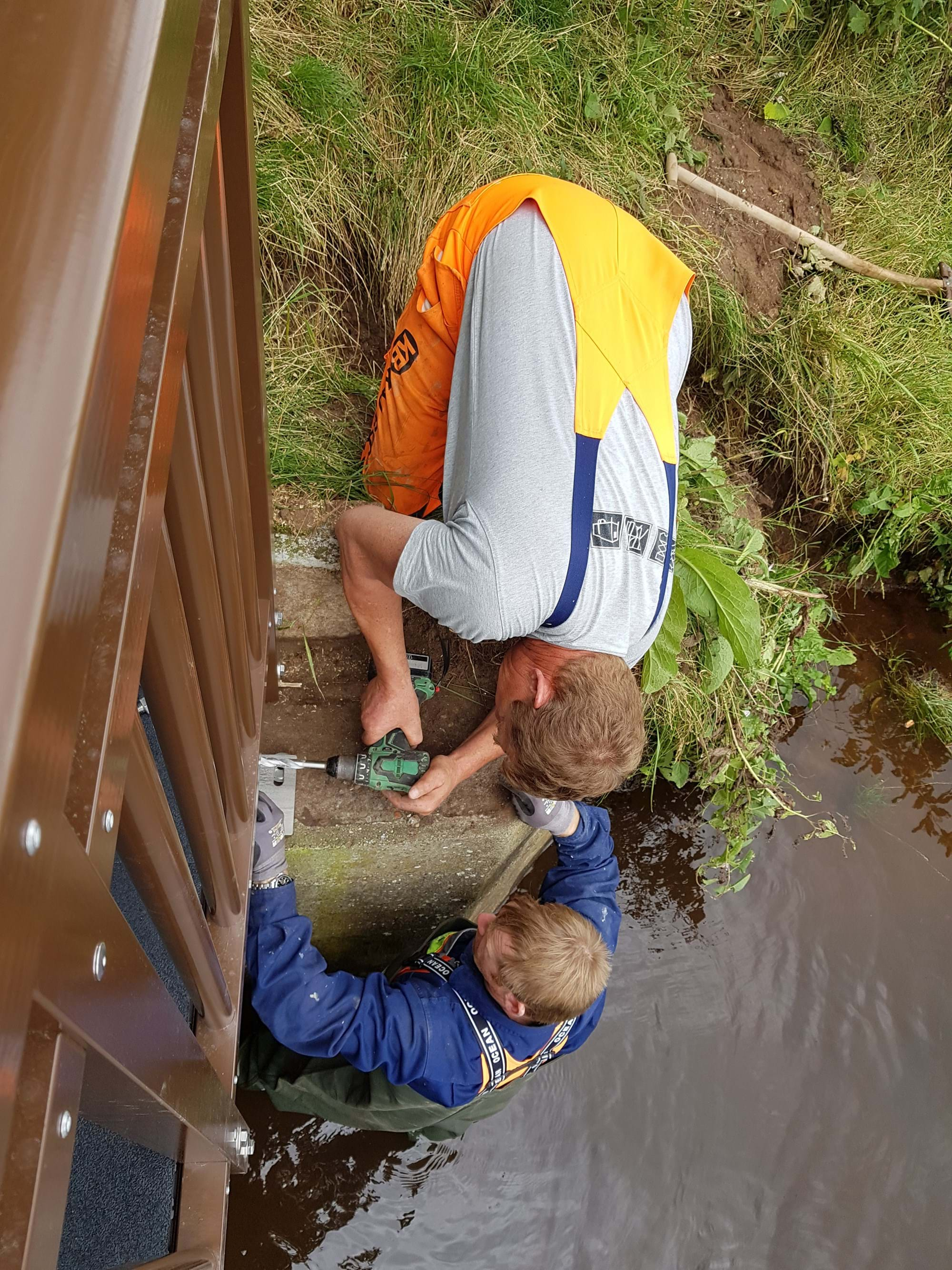

On the page you will find our how to videos. Here we have gathered our advise and recommendation for working with fibreglass, in order for you to easily get startede with fibreglass for your next project. Do you have more questions or are you missing a specific how to video, please contact us.
Sawing must be performed using diamond tools. A circular saw or jigsaw is ideal for straight cuts. During sawing, the profile should be securely retained on a stable, vibration-free bed. Diamond blades should be used when sawing large series for smooth cuts without burring. The cutting speed should be 60 m/sec, and to achieve the best results, feed lightly. Too heavy feeding merely increases wear on the blade.
Drilling the profiles is relatively easy. An ordinary metal drillbit can be used to bore individual holes or small series of holes.
Use of a special bit is recommended for drilling large series of holes. This will produce a sharp hole rim without burr – also at the exit. The bit is designed to give as little vibration as possible when drilling perpendicular to the surface, which is an added advantage when using power drills.
For drilling large holes, a spoon bit with a centre bit is recommended. Burr on hole rims can be avoided by drilling part-way through from one side of the profile, and then the rest of the way from the other side.
Pultruded profiles can be deburred with sandpaper. Use of a belt grinder at high speed and slow advancement is recommended.
Self-tapping screws are a fast and efficient way to fasten two fiberglass profiles together, but it is important to note that the connection can only transfer shear forces and only to a limited extent. If you have joints that must transfer forces, we recommend bolted joints, which are very well documented. If you have further questions about screws, their application, or the fiberglass material, you can contact one of our knowledgeable advisors here
Carbide plates should be used in turning. Speeds of up to 400 m/min. can be used, and a rake angle on the cutting edge between 10 - 15° will give the best result. Feeding depends primarily on the stability of the set-up, but is typically between 0.05 and 0.5 mm/rev. Depending on the machine and the set-up, the depth of cut can be up to 10 mm. Using rounded tool bits and air or liquid cooling results in the best surface finish. Turning can also be done with a rotating diamond milling cutter in the tool holder.
Milling with a diamond cutter is recommended. In this type of machining, tools with a rake angle on the cutting edge of between 5° and 15° can be used. Feeding can be up to 0.5 mm/rev., and speeds of up to 1000 m/min. will give the best results. Too heavy feeding will cause unwanted heating of the surface and gives less satisfactory results.
We recommend using equipment that is designed for machining steel due to the abrasive properties of the reinforcement. However, for single-unit production it is possible to use woodworking machinery. For sawing or cutting, diamond tools should be used. Carbide bits can be used for drilling.
GRP pultruded profiles are elastic, and twisting and bending can occur when machining long lengths. Stationary, vibration-free support and retention should therefore always be ensured. If finished profiles are to be used in chemically aggressive environments it is necessary to seal all cuts.
For punching, threadcutting and water jet cutting see here